Earlier this month, astronomers spotted a bizarre interstellar object hurtling through the solar system.
Dubbed 3I/ATLAS, this 12 miles (20km) long visitor has travelled to our sun from another star on a journey that could have taken billions of years.
But now, a leading physicist says he has spotted the key piece of evidence that shows 3I/ATLAS could be an alien spacecraft.
Professor Avi Loeb, a theoretical physicist and cosmologist from Harvard University, told MailOnline that this interstellar object is simply too big to be natural.
Experts suggest that it must either be an exceptionally large solid mass or a smaller comet with a bright envelope of gas and dust.
If it is not a comet, Professor Loeb says 3I/ATLAS is so impossibly large that the chances of it naturally reaching our sun are incredibly low.
Professor Loeb says: ‘It is difficult to imagine a natural process that would favour a plunge towards the inner solar system at 60 kilometres per second.
‘An alternative is that the object targets the inner solar system by some technological design.’
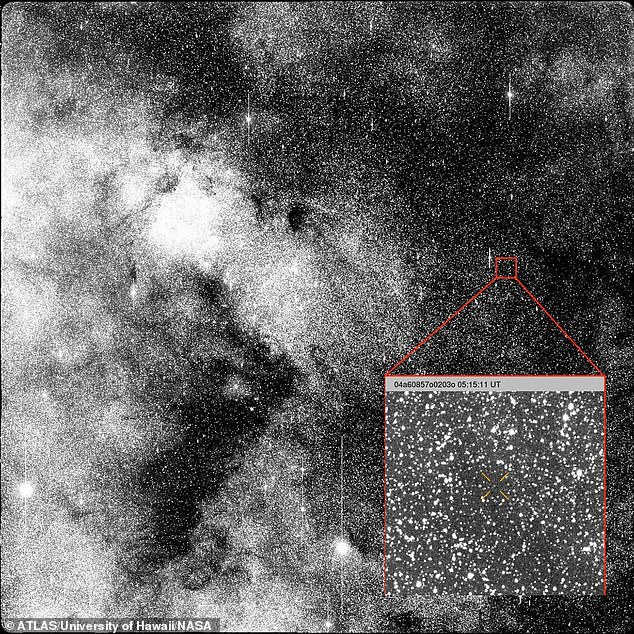
On July 1, astronomers spotted an interstellar object, now dubbed 3I/ATLAS, hurtling through our solar system on a journey from another star
3I/ATLAS was first spotted by astronomers on July 1 by NASA’s Asteroid Terrestrial-impact Last Alert System.
After tracing its orbital path, scientists realised that its extremely elliptical orbit and high speed meant its origins lay outside the solar system.
This makes it only the third interstellar object that humanity has detected, following ‘Oumuamua in 2017 and Borisov in 2019.
Arriving from the direction of the constellation Sagittarius, 3I/ATLAS is currently heading towards the inner solar system at 135,000 miles per hour.
NASA predicts that it will reach its closest point to the sun on October 30, at a distance of 130 million miles (210 million km) – passing just within the orbit of Mars.
Thankfully, the object poses no threat to Earth and will pass harmlessly at around 150 million miles (240 million km) away at its closest point.
Since the object is currently around 300 million miles (490 million km) from Earth, astronomers can’t directly measure how large it is.
Instead, they try and work out how much light the object gives off and estimate its size based on how reflective it might be.
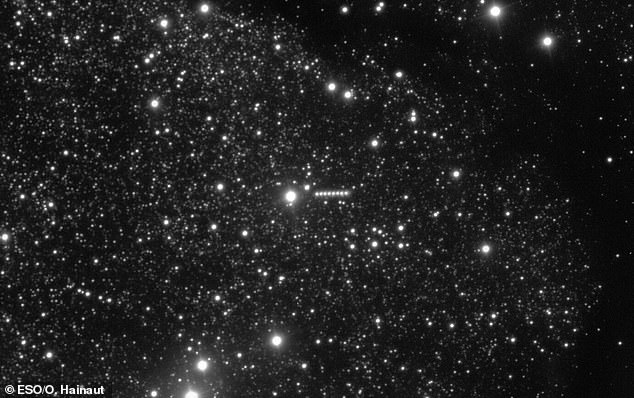
Professor Avi Loeb, a theoretical physicist and cosmologist from Harvard University, told MailOnline that 3I/ATLAS is so large that its appearance in the solar system suggests deliberate steering. Pictured: multiple exposures of the object shown as a series of dots
If it is a solid object like an asteroid, which reflects around five per cent of the light that hits it, then 3I/ATLAS must be between 12 and 14 miles (20-24km) in diameter.
That makes 3I/ATLAS up to 200 times larger than the 100-metre-long and extremely thin ‘Oumuamua.
Professor Loeb says this fact immediately made him suspicious since large objects are typically much rarer than smaller ones.
Professor Loeb says: ‘Now you ask, “how many objects on the scale of ‘Oumuamua are there for each object that is 24 kilometres in size?”
‘The answer is about a million. But we haven’t seen a million ‘Oumuamua-sized interstellar objects before seeing this one, it’s very strange.’
But Professor Loeb says that the strangeness of 3I/ATLAS’ size doesn’t stop there.
In a paper, now accepted for publication by the Research Notes of the AAS, Professor Loeb asked what it would take for an object of 3I/ATLAS’ size to reach Earth.
Based on how often we see objects of this size, previous research calculated how many 12-mile-long objects could exist out in the Milky Way.
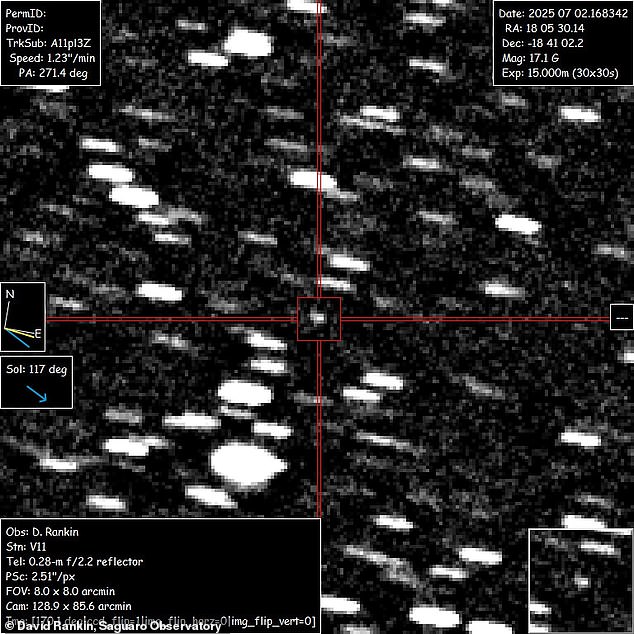
Scientists believe 3I/ATLAS is 12 miles long, making it significantly bigger than the last 2 interstellar objects to be tracked as they passed through the solar system
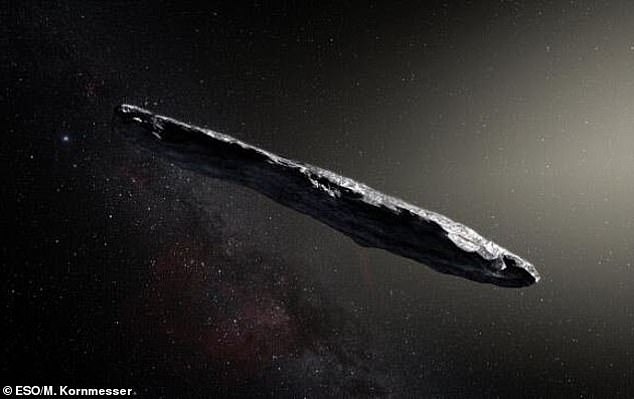
3I/ATLAS is up to 200 times larger than the 100-metre-long and extremely thin ‘Oumuamua (pictured), which passed through the solar system in 2017

Professor Loeb says that it ‘makes zero sense’ to assume that something so large could be common enough in the galaxy to reach us by chance
When Professor Loeb took this number and multiplied it by the mass of 3I/ATLAS, the result ‘makes zero sense’.
‘This ends up being a quarter of the mass of the stars in the Milky Way,’ says Professor Loeb.
‘But because only two per cent of the mass in stars is in heavy elements that make rocks, you don’t have the mass to make enough rocks of this size.’
The implication is that 3I/ATLAS is much, much rarer than its appearance in our Solar System suggests.
In fact, Professor Loeb argues that objects this big are too rare for their appearance in the inner solar system to be random.
Professor Loeb says: ‘It’s not like these objects are floating around in all directions, this object was aiming to get to the inner solar system.
‘The question is: “Why was it sent in the direction of the inner solar system?”‘
Professor Loeb isn’t sure what this says about 3I/ATLAS’ origins, but he compares the situation to the novel ‘Rendezvous with Rama’ by Arthur C. Clarke.
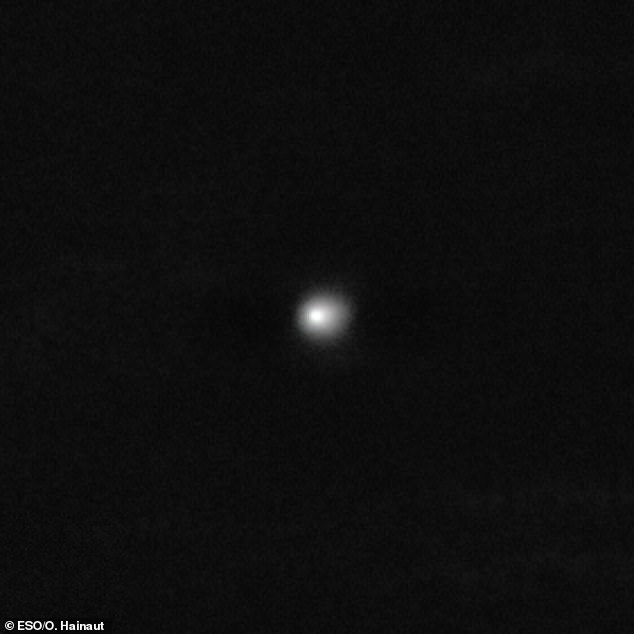
Professor Loeb says that objects of 3I/ATLAS’ size should be one million times rare than those similar to ‘Oumuamua. This makes it unlikely that one would arrive in the solar system by chance
In that story, an interstellar object arriving in the solar system turns out to be an alien spacecraft sent by an advanced civilisation.
However, just like in Arthur C. Clarke’s fictional account, Professor Loeb suggests that scientists will need to do a lot more investigation before we know what 3I/ATLAS is.
Could it be anything else?
The alternative explanation for 3I/ATLAS’ apparent size is that it is much smaller and much more reflective than any asteroid.
That would be possible if the interstellar object is a comet, a ball of ice and dust which moves very quickly through space.
If it were a comet, the heat from the sun would evaporate a layer of ice and dust, which would reflect back a lot of light.
This would explain why 3I/ATLAS appears to be so bright while maintaining that its core is small enough to be natural.
This is the accepted answer among most astronomers and space agencies, with NASA and the European Space Agency labelling the object an ‘interstellar comet‘.
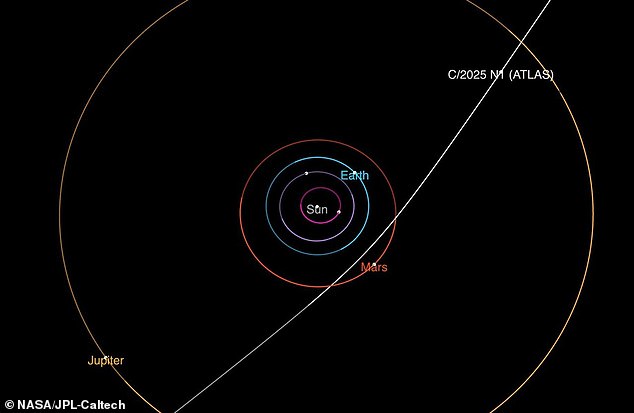
NASA predicts that 3I/ATLAS will reach its closest point to the sun on October 30, at a distance of 130 million miles (210 million km) – passing just within the orbit of Mars
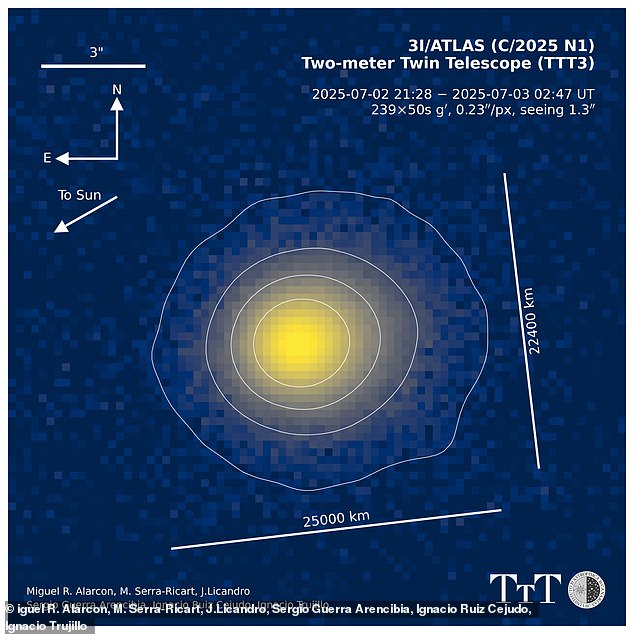
The alternative explanation is that 3I/ATLAS is a comet with a bright, reflective envelope of gas and dust and a very small core. Professor Loeb says this is ‘likely’, but more evidence is needed
While Professor Loeb says that this is the ‘simplest and most likely’ solution, he doesn’t think that the evidence for the comet theory is conclusive.
For example, he points to a recent observation by the European Southern Observatory (ESO) Very Large Telescope (VLT).
The VLT did not find direct evidence of dust or gas being released by the object, but concluded that it was a comet based on surface ‘reddening’ caused by dust.
Professor Loeb maintains that this could simply be caused by the fact that the surface is red.
Likewise, observations showing the fuzzy streak of the comet’s gas layer could be an artefact of the long exposure images and 3I/ATLAS’ high speed.
This doesn’t mean that 3I/ATLAS isn’t a comet, but Professor Loeb believes it’s still too early to rule out the possibility that it is a solid object.
‘The good news is that it will come closer to the sun and it will get heated up by sunlight,’ says Professor Loeb.
‘The more it is heated, the more mass it would shed if it were a comet, and the easier it will be for us to tell what this object is.’












